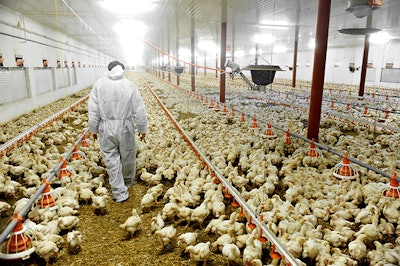
Infectious bursal disease is a highly contagious disease most often seen in young chickens and turkeys caused by the infectious bursal disease virus (IBDV).
The disease targets the tissues of the immune system and the bursa of Fabricus, resulting in immunosuppression and an increased susceptibility to secondary infections, including E. coli, Salmonella, Mycoplasma, coccidia, Marek’s disease and others.
Endemic through most of the world
Infectious bursal disease was first discovered in Gumboro, Delaware in 1962 and as a result is also known as Gumboro disease. It is easily spread from infected chickens to healthy chickens through food, water and physical contact and is considered to be endemic in poultry flocks throughout much of the world.
Iceland reported an infectious bursal disease outbreak in July 2019. The disease had not been detected in the country since 1998, therefore the local poultry industry hadn’t been vaccinating against infectious bursal disease.
Management strategies
Vaccination is the most common – and effective – strategy for preventing infectious bursal disease.
In recent years, very virulent strains of IBDV (vvIBDV) that cause severe mortality in chickens have emerged in Europe, Latin America, Asia, Africa and the Middle East.
Researchers at The Pirbright Institute are currently working to evaluate the genetic differences between very virulent and classic strains of IBDV, which could lead to a better vaccine against the virus.
“In the 1980s, a so-called “very virulent” (vv) IBDV strain emerged that could kill up to 60% of some flocks. This strain has now spread across the globe. There are several vaccines licensed for use against IBDV, but we are now seeing more and more vaccine failures, for reasons that we don’t fully understand. This means IBDV is a big concern for commercial poultry units,” explained Andrew Broadbent, head of the Birnaviruses Group at The Pirbright Institute


















